Well here goes – my last Dunedin adventure for quite a long time! We decided to strike off a place I’ve had on my list for quite some time – Whareakeake, once known as Murdering Beach in consequence of a squabble that took place here between Maori villagers and a visiting whaling crew. So once more we set off to find a scenic Dunedin spot with a bloody past.
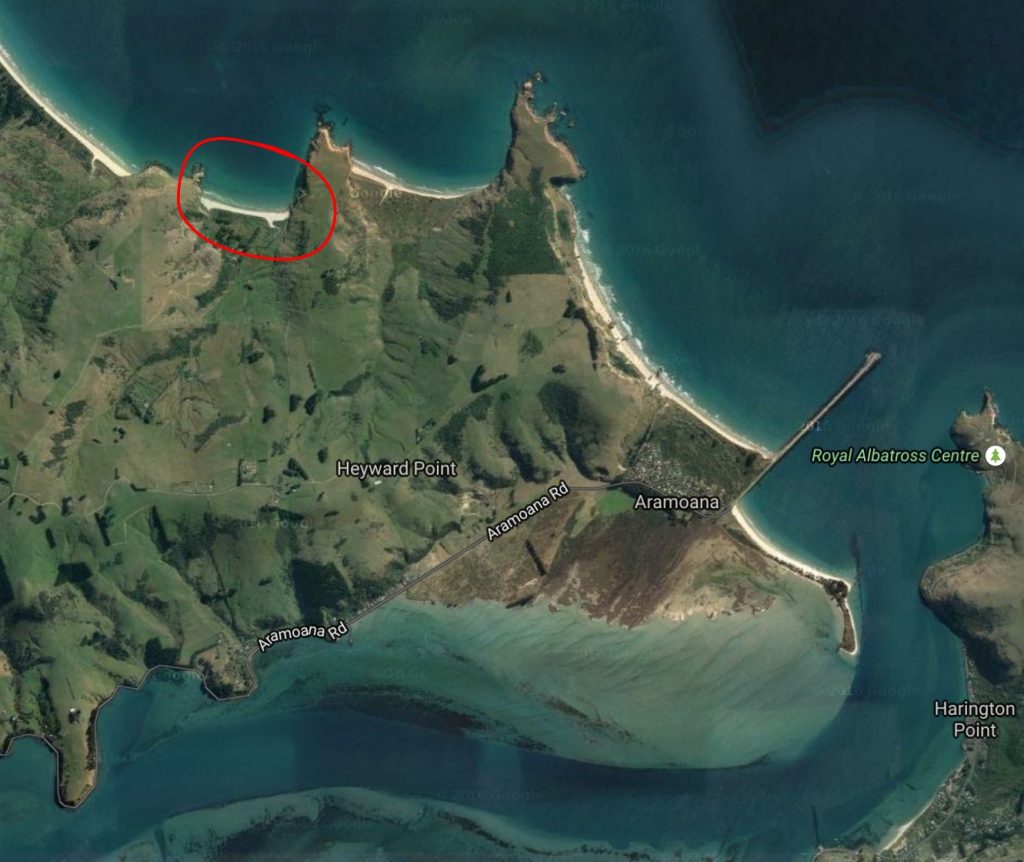
We set off towards Port Chalmers on a clear winter morning, frost still glistening on the pavement. Carefully we made our way along the harbour road past Ravensbourne, turning off at Sawyers Bay. Then it was a right turn onto Stevenson Ave and then on to Borlases Rd which would take us up the hill via Blueskin Rd. Then we turned on to Purakanui Rd as if to go to Long Beach, but instead continued along the ridge on Heyward Point Rd.
Finally we found the steep gravel road that would take us down to Whareakeake. We descended slowly into the green swampy valley until we reached the small beach side car park. We’d made it!

Almost immediately after stepping on to the beach we noticed amongst the tide line debris several live crabs, almost as if they’d been washed up in a violent storm. However the weather had been pretty calm lately so it was a mystery as to how the dazed creatures had found themselves tossed high up on to the beach.
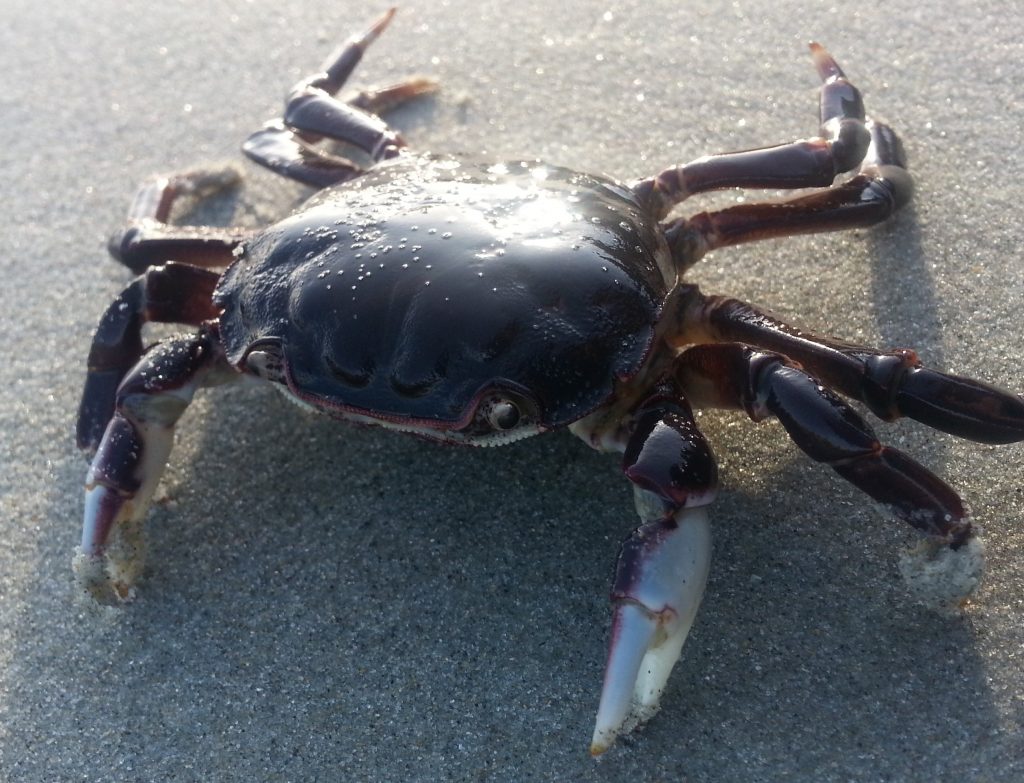
While all the live crabs were red ones like the one pictured, there were shells and other pieces of at least two other species of crab.
Whareakeake was both the site of a settlement in the Maori moa-hunting era and the site of a more recent settlement, with a palisaded village possibly having been located on the swampy area behind the beach. Hundreds of greenstone artefacts have been found here, mostly tiki, as it seems like this was once a processing site for pounamu brought here from inland or the West Coast. In the early days of European settlement the beach was actually systematically mined for these treasures, many of which were sold to tourists, but a large collection has also ended up in the Otago Museum.
Sadly for us, we found no treasure amongst the tidal debris.
Also searching for treasures of their own were several birds – two black oyster catchers and two pied stilts. They paid little attention to us.

The notorious incident that made this beach famous happened here almost 200 years ago over Christmas 1817. James Kelly, captain of the whaling brig Sophia, pulled in here to barter supplies from the natives. As the whaler’s version of the story goes, during the bargaining process the Maori villagers, who had until that point had appeared to be quite friendly, attacked without warning. The crew had left their firearms aboard ship on the advice of William Tucker, who had been in the area before and was known by the Maori as “Wioree”.
The crew were forced to fight their way back to the landing boat, losing three men in the process, including Tucker who had apparently tried to defuse the situation but was overrun and killed.
Upon reaching the brig (and once again, you understand, this is the whalers’ version of the tale) they found it overrun with Maori warriors who intended to capture the vessel. The fourteen sailors gallantly defended the vessel against about a hundred and fifty Maori using only their whaling knives, causing many to jump overboard in fright and be drowned by the receding tide. About fifty Maori were killed while the crew suffered no further casualties, and they also succeeded in capturing one of the ringleaders, named Korako or Karaka.
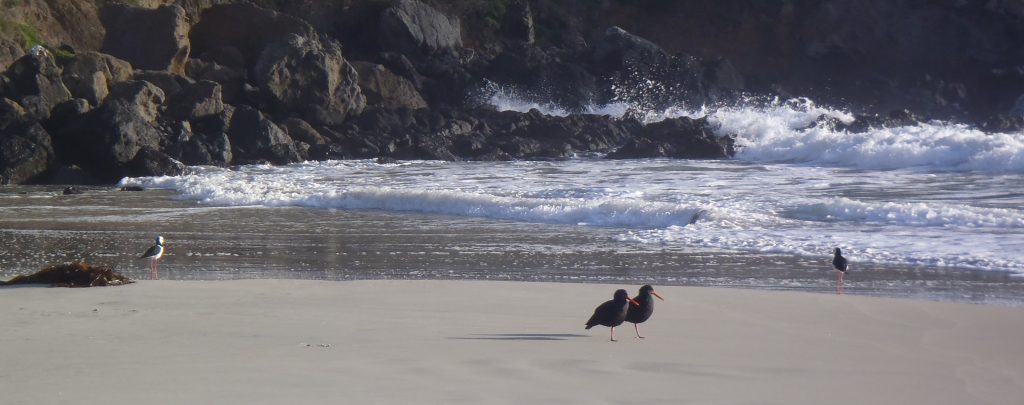
This man they displayed from the deck the following morning, and the villagers proceeded to bring out a canoe loaded with potatoes, presumably to barter for their chief’s freedom. But at the last minute a watchman on the deck of the brig noticed that what appeared to be sacks of potatoes were in fact warriors hidden beneath sacking. The whalers fired on the boat as the warriors attempted to gain the ship’s deck. The chief leaped from the brig, and was pulled from the ocean by his fellow tribesmen. Alas, he was fatally wounded, and died in the night.
The next morning the whalers noted a lot of activity on shore, and concluded that the only way to be safe from the Maori threat was to destroy their canoes. So they launched their boats and landed ashore, sawing each one of the canoes into three pieces before departing. Later accounts state they also burned the village, although archaeological evidence suggests they burned a completely different village in revenge, one inside Otago Harbour.
Unsurprisingly, the Maori side of the story is slightly different. It states that a European man was killed during a quarrel, after which the whalers returned and kidnapped Korako/Karaka and several others. The remaining villagers were fearful of the crew’s firearms but determined to rescue their men. So they wove toitoi leaves into thick protective garments called pokeka and sailed out to give battle. The chief was able to jump from the ship and none of the rescuers were killed thanks to their ingenious improvised armour. What became of the other captives is not told.
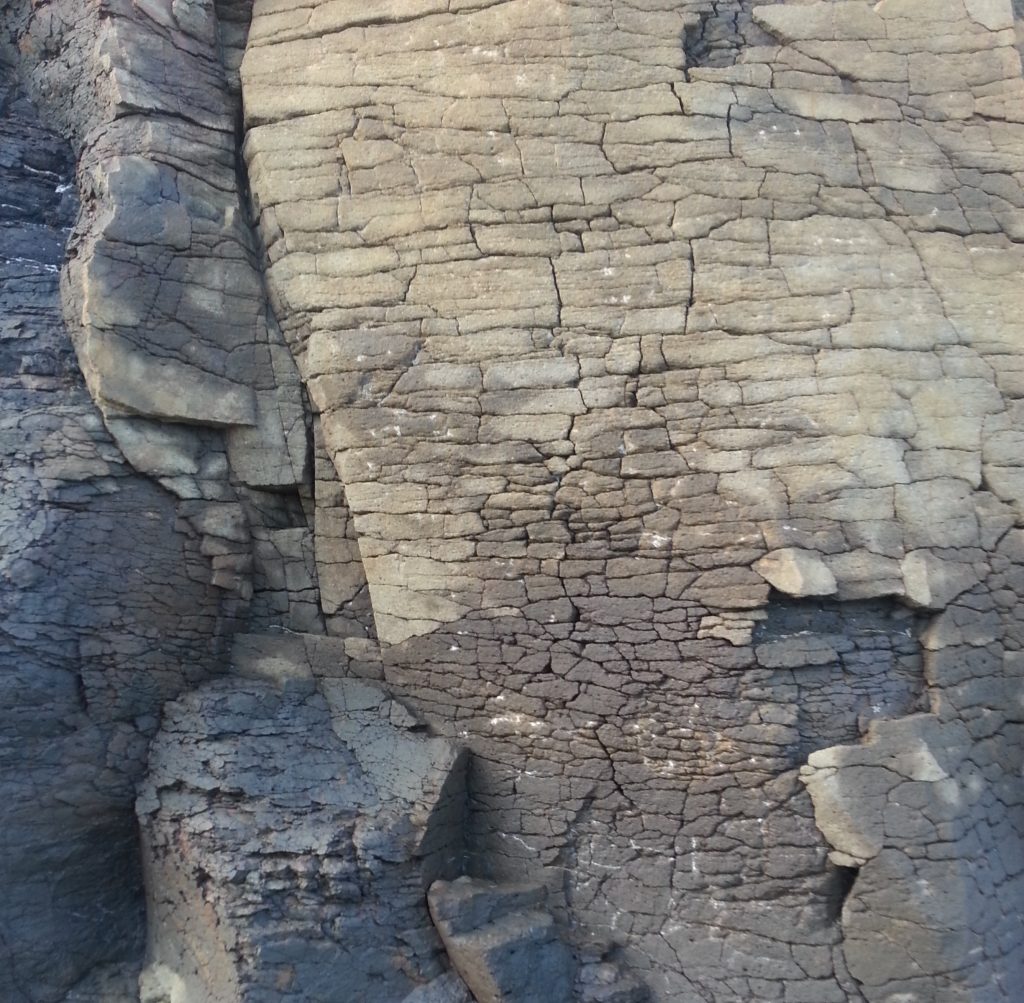
But what was the cause of the quarrel? In the earliest accounts, Kelly’s crew blamed the conveniently dead Tucker for being overconfident when dealing with the bay’s inhabitants. Later re-tellings add the idea that Tucker had stolen a preserved head on a previous visit in 1811, and this is the crime for which the crew was attacked. However since this explanation did not emerge until 1858, it’s considered extremely suspect.
As for the Maori, oral tradition holds that quarrel arose because the crew of the Sophia were mistreating the local women. Hmm.
As we crunched over silver-tinted sand still sparkling with last night’s frost, we could only reflect that we may never truly know exactly what happened here. We reached the boulders at the far end and watched as the surf splashed against the rocks. Then we turned back, still following the tide line, but this time we really did find a treasure…
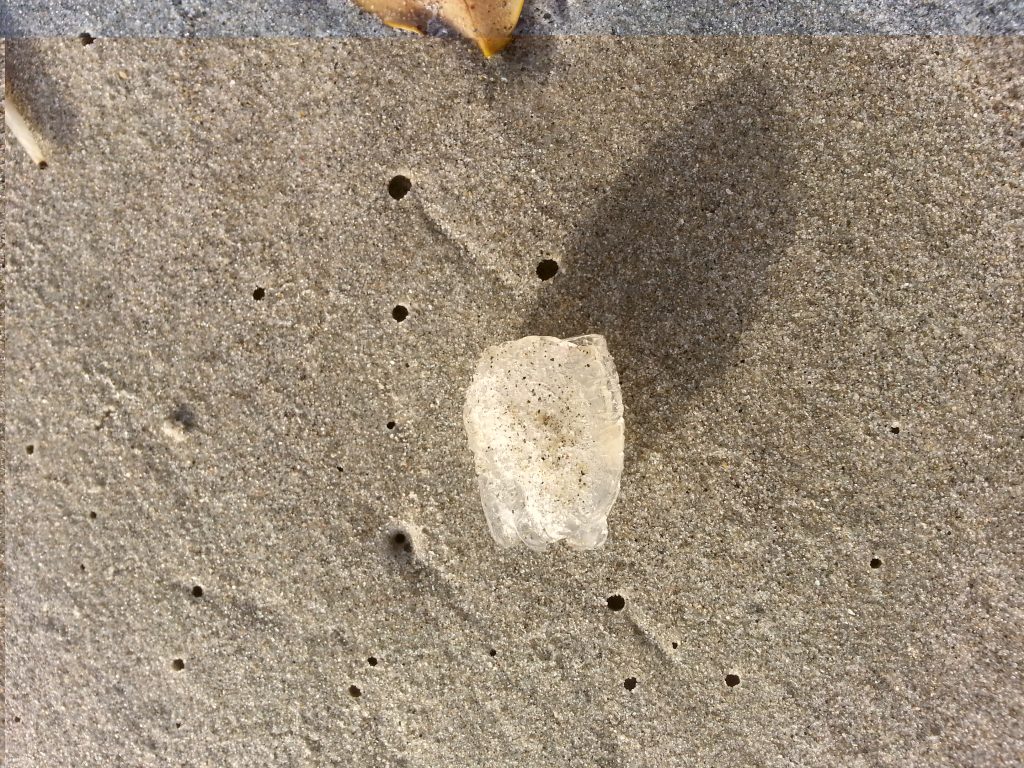
This barrel-shaped jelly-like thing is the body of a salp, a very strange sort of marine animal that filter feeds via the inside of the “barrel”. The females of a type of crustacean called phronima sometimes attack these creatures, hollow them out, and incubate their eggs inside, using the husk of their victim as a sort of mobile home. However neither me nor dad have ever found one with the phronima inside.

With that fascinating parting gift it was time for us to leave the infamous beach, and the time was fast approaching for me to leave Dunedin as well. My last Dunedin adventure certainly did not disappoint, and left me looking forward to what mysteries I will encounter in the future.
References:
The Story of … — Murdering Beach — A Pakeha-Maori Encounter Near Dunedin in 1817
NEW ZEALAND. ADVENTURE AT OTAGO FORTY YEARS AGO. Otago Witness, Issue 351, 21 August 1858
The welcome of strangers : an ethnohistory of southern Maori A.D. 1650-1850 by Atholl Anderson
The Archaeology of Otago by Jill Hamel
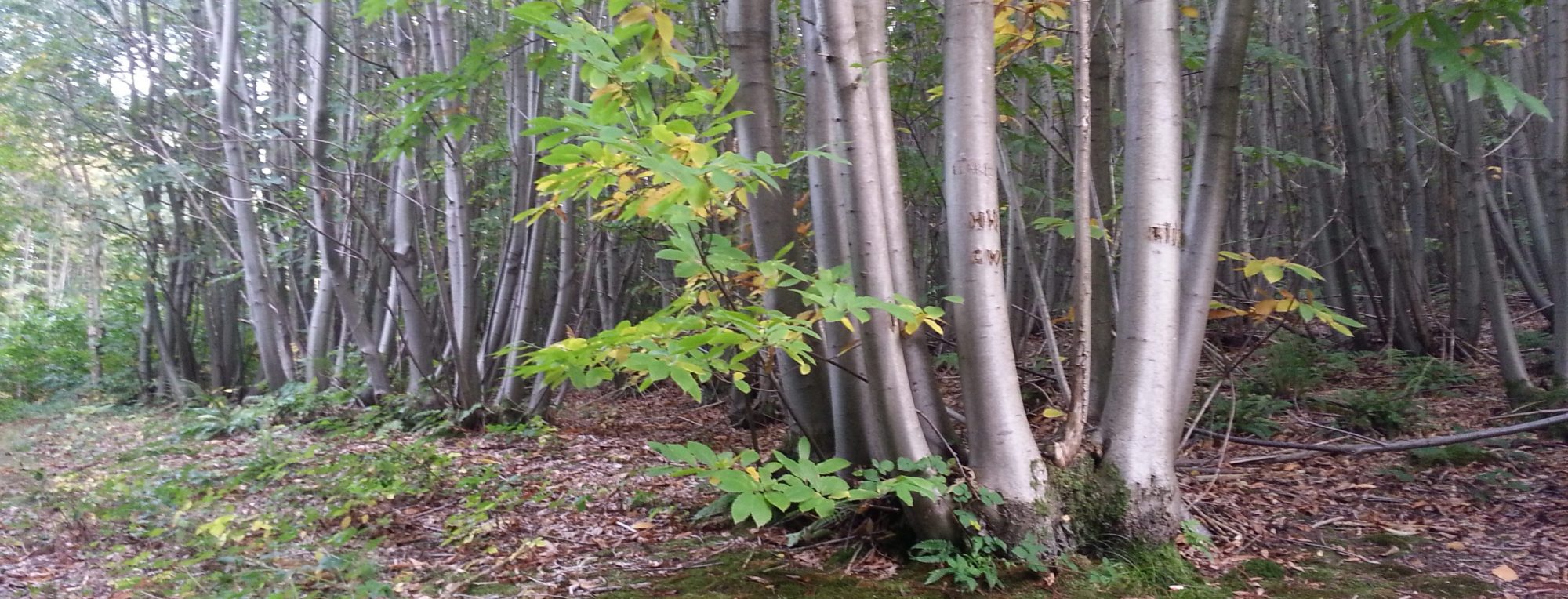

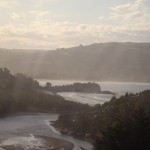
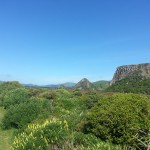
Great adventure as always. The micro photos are very clear. Great read
Well, if you can call slaughtering Maori onboard and throwing women overboard a ‘fracas’.:)
very informative article, check out Telkom University
Greetings. I’m teaching a book (1962) by Peter McIntyre of Otago, who retells that he was told by one Farner Driver, descendent of Dickie Driver, who pointed out the surf of Murdering Beach, where in the whaling days there has been a large Maori Pa. “A boats crew had put in from a whaler and, as the result of a quarrel over a Maori woman, had been attacked. Later their ship put in again and set fire to the pa.”
So there are direct supportive recollections of this history. I want sure how to interpret your :Hmm.”
Edit: “I’m reading a book..”